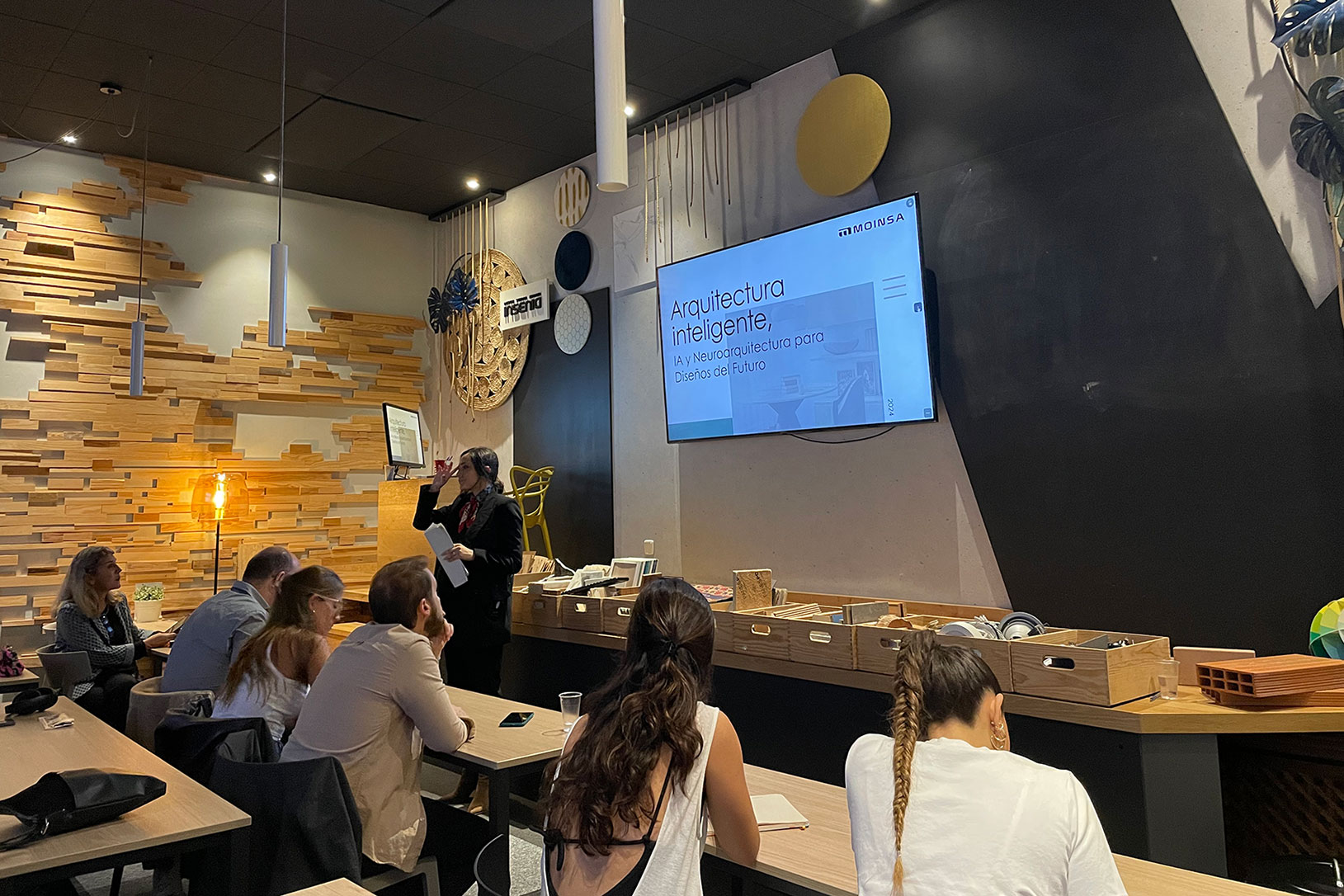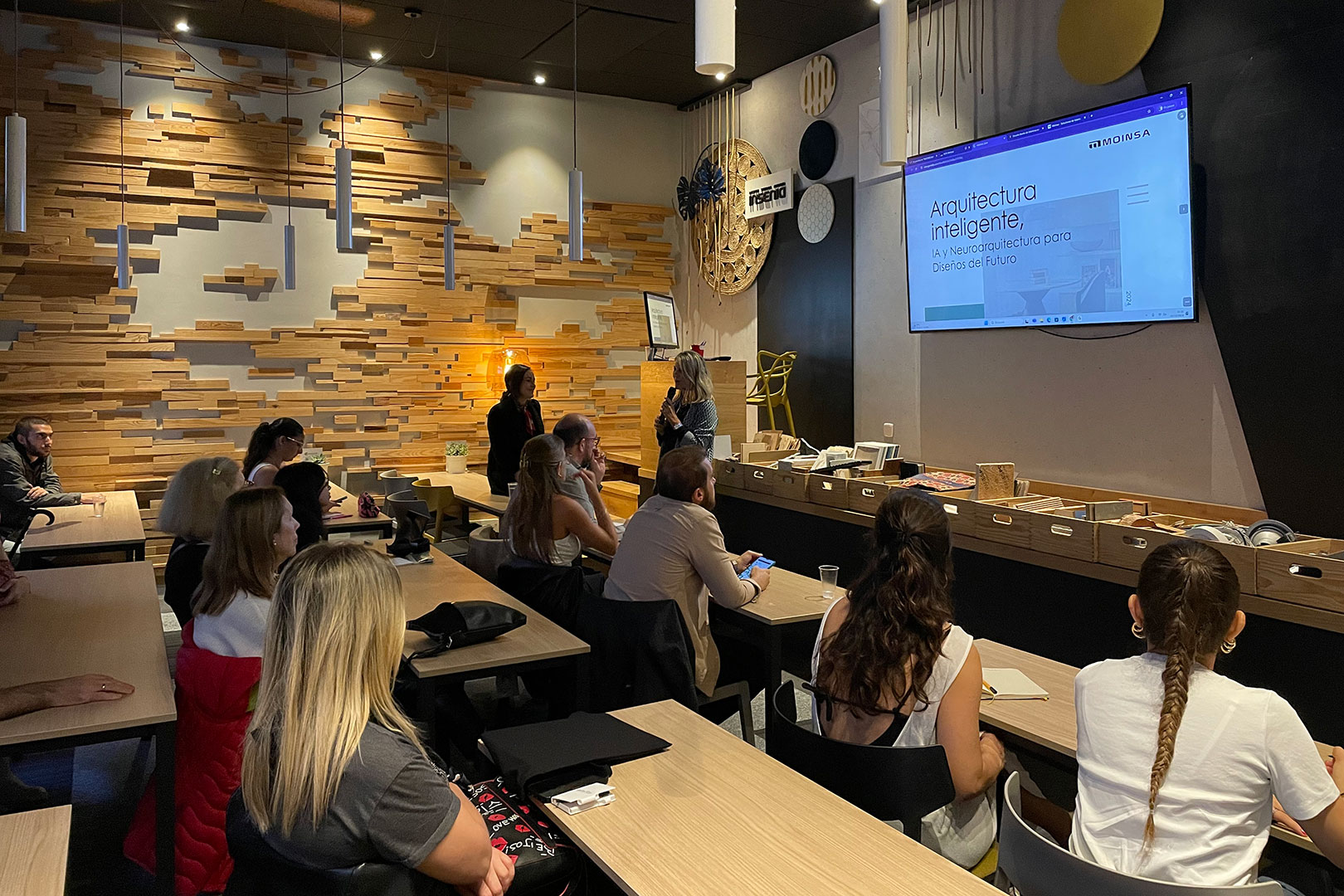In October 2024, we had the privilege of participating in a talk at INSENIA Design School, where we explored how neuroarchitecture and artificial intelligence (AI) are revolutionizing spatial design.
But this wasn’t just theoretical: at our company, we apply these principles to every project, creating environments that are not only aesthetically pleasing but also enhance people’s well-being, productivity, and experience.
What is neuroarchitecture and why does it matter?
The physical environment directly influences our emotions, concentration, and performance. Neuroarchitecture combines architecture with neuroscience to design spaces that positively impact the brain and nervous system.
At our company, we have incorporated this approach into offices, commercial spaces, and industrial environments, ensuring that every design generates positive sensations and promotes the well-being of those who inhabit them.
Key Elements in the Design of the Future
Throughout the talk, we address the elements that make a space functional and emotionally significant:
Symmetry, Proportion, and Balance
Harmonious spaces generate a sense of order and tranquility. We use the golden ratio and a balanced layout to make each environment pleasant and functional.
Color and Texture: The Power of Perception
Each color awakens emotions. For example:
- Blue: relaxes and encourages concentration.
- Green: evokes nature and well-being.
- Yellow: boosts creativity and energy.
In our projects, we choose strategic color combinations to enhance the user experience.
Light Beyond Lighting
Light regulates our biological rhythms. In our designs, we prioritize natural light and use dynamic lighting systems, which adapt to different times of day to improve productivity and comfort.
Ergonomics and Well-Being
Design should adapt to people, not the other way around. At our company, we develop ergonomic solutions that guarantee comfort and efficiency, especially in offices and workspaces.
Artificial intelligence in design: creativity and efficiency
AI has changed the game in interior design. Thanks to advanced tools, we can now:
- Generate hyper-realistic mood boards and renderings.
- Optimize space layout in seconds.
- Create visual simulations to anticipate the user experience.
In our company, we have integrated these technologies to offer more innovative and personalized solutions to our clients.
From concept to reality: our commitment to innovation
The most important thing is that we don’t just limit ourselves to theory. We apply these principles to every design we create, promoting projects that improve people’s lives.
Because we know that spaces are not just lived in, they are also felt. And in each of our projects, we put technology and knowledge at the service of emotions.
Do you want to discover how we can transform your space? Let’s talk.


